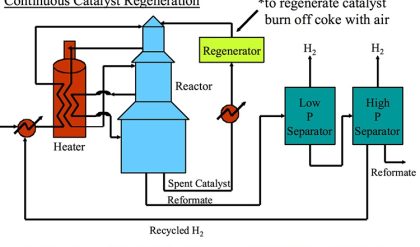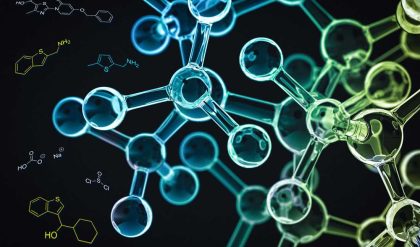Operational deposits on the hydrocarbon side of a cracking unit will typically be a mixture of organic and inorganic materials consisting of iron, sulfates and sulfides. The consistency of these deposits ranges from hard coke-like material to what can be described as a sludge. The coke deposits will usually be found in the heat exchanger bundles in the cycle oil line between the bottom of the fractionator and the reactor. Coke deposits may also be found in the feed stream pre-heat furnace. Hydroblasting is probably the most effective means of removing the coke. No solvent system has been found that is effective in removing the coke.
The fouling on the water side of the heat exchangers will be primarily water-borne scales and corrosion products. Depending on the water source, there are many techniques for the chemical removal of these types of deposits that are effective, efficient and cost tolerant. The air side of the fin-fan coolers will become fouled with a soot-like coating of ordinary dirt. This type of fouling can usually be removed by spray washing with a hot neutral detergent-based solution containing a suitable surfactant.
The boilers will become fouled with the same type of deposits that can be found in conventional boilers. Co and waste heat boilers are susceptible to fouling by operational deposits. These units must be periodically cleaned just like any other type of boiler.
Lube and seal oil systems are very important in a cracking unit. In addition to the uses on pumps and boilers. There will be large systems for the air compressors and cyclone separators that are typically thousands of gallons in system volume. While these systems do not require to be cleaned often, they are occasionally cleaned. Cleaning can be accomplished by the processes typical of preoperational cleaning techniques. Of interest, because of the extensive amount of temporary piping that is required to form a circulation loop, vapor phase cleaning with the appropriate chemical additives is a good candidate for the cleaning process.
The fractionator and the associated equipment will contain fouling similar to that found in the crude plant distillation process. The columns will require hazardous vapor removal for light-end hydrocarbons such as benzene and de-oiling. Additionally, since the catalytic reactions of the FCC unit result in the formation of unsaturated compounds (alkenes), you also encounter low-molecular weight polymers and varnish that can deposit inside the fractionator and heat exchange equipment.
Lastly, the FCC unit also has a nasty vessel called a Slurry Settler tank. This vessel collects catalyst fines that have been suspended in slurry oil from the process. The separated slurry oil is decanted from the top of the vessel for re-use while the catalyst fines precipitate inside of the slurry tank forming a hard, concrete-like solid. The catalyst solids are impregnated with hydrocarbons that make the catalyst fines a hazardous waste that carries an EPE K hazardous waste code. This material is expensive to dispose.
Recent develops in extraction chemistry have resulted in a process and chemical products that are effective in removing low PPM-levels of the numerous constituents that comprise the K-code and allow for a non-hazardous disposal of the spent catalyst fines through conventional non-hazardous waste disposal facilities. Imagine the savings to be gained in non-hazardous disposal.



Comments are closed.